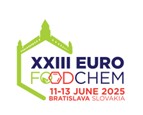Scientific journal
Journal of Food and Nutrition Research
Summary No. 3 / 2021
Liu, H. – Zhou, K. – Jiang, H. – Wen, L. – He, Y. – Lu, S. – Wang, B. – Li, J.
Current advances in anthocyanins: structure, bioactivity and human health
Journal of Food and Nutrition Research, 60, 2021, No. 3, s. 203-216
Liankui Wen, Yang He, Department of Food Science and Engineering, Jilin Agricultural University, Xincheng Street 2888, 130118 Changchun, China. Tel.: +86-0431-84533104, fax: +86-0431-84533104, e-mail: wenliankui@jlau.edu.cn; heyang200704@jlau.edu.cn
Received 11 March 2021; 1st revised 26 June 2021; 2nd revised 14 August 2021; accepted
Summary: Anthocyanins are a class of water-soluble flavonoid compounds, which are widely found in plants. The structure and content of anthocyanins from fruits (137–5702 mg·kg-1 fresh weight, FW), cereals (363–416920 mg·kg-1 dry weight, DW) and vegetables (770–3 220 mg·kg-1 FW) are reviewed. The relationship between anthocyanin structure, biological activities (antioxidant, anti-inflammatory, bacteriostatic) and disease improvement (cancer, organs injury, diabetes, obesity, eye diseases, neurodegenerative diseases) is discussed. The antioxidant activities of anthocyanins were delphinidin > petunidin > cyanidin > malvidin > peonidin > pelargonidin, and the antioxidant activity of anthocyanins glycosylated only on C3 position was higher than that of anthocyanins glycosylated on both C3 and C5 positions. The anticancer effects of cyanidins and peonidins were stronger than those of malvidins, and the hepatoprotective and antidiabetic effects of cyanidins were stronger than those of peonidins.
Keywords: anthocyanins; structure; bioactivity; human health
Download:
(pdf, 383.29 Kb, 2224x)










